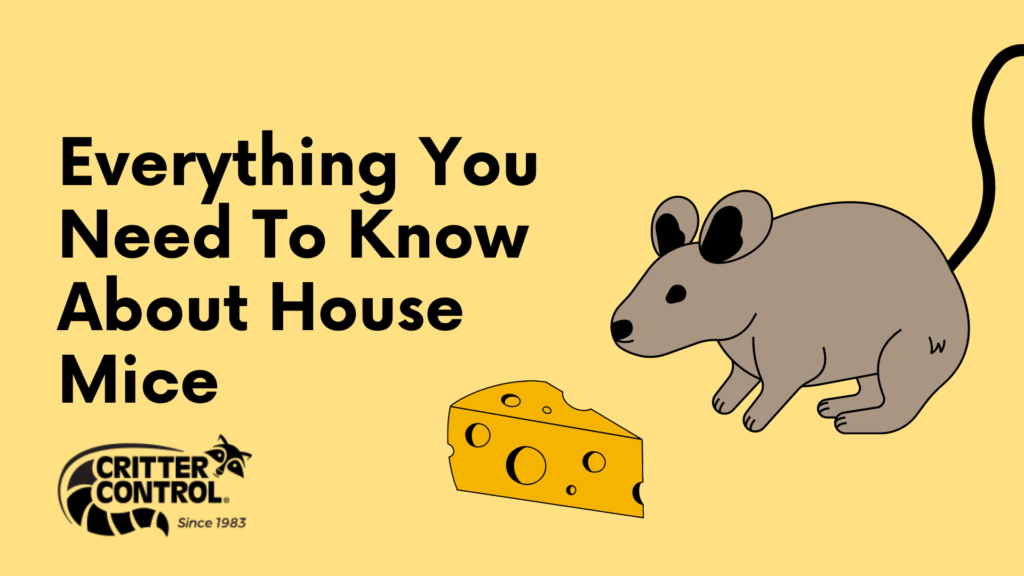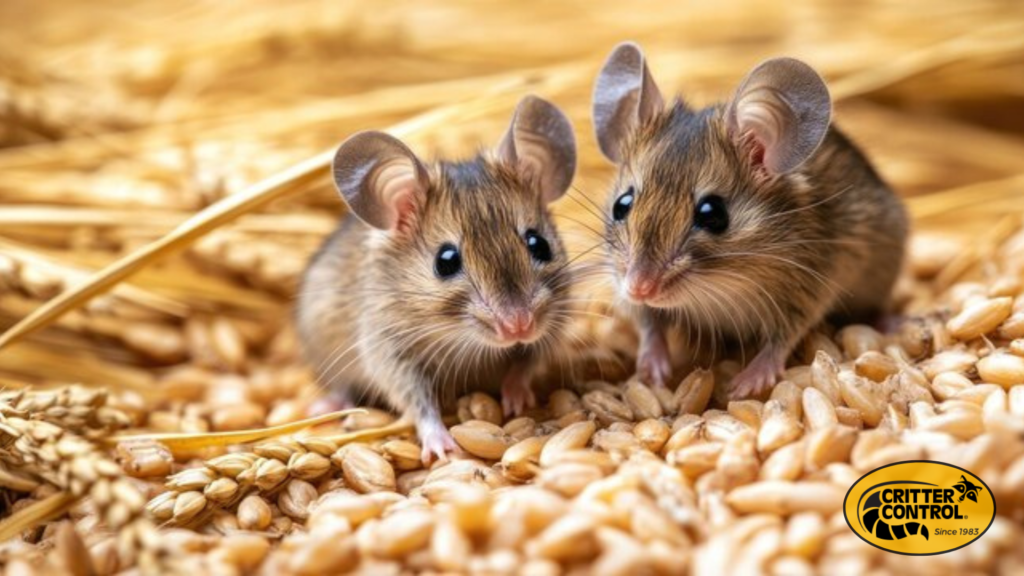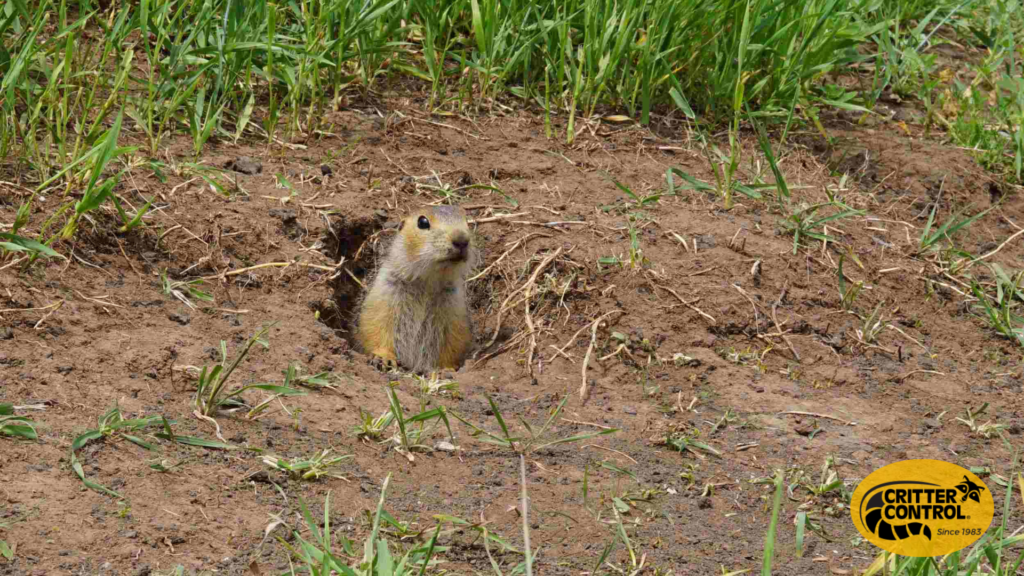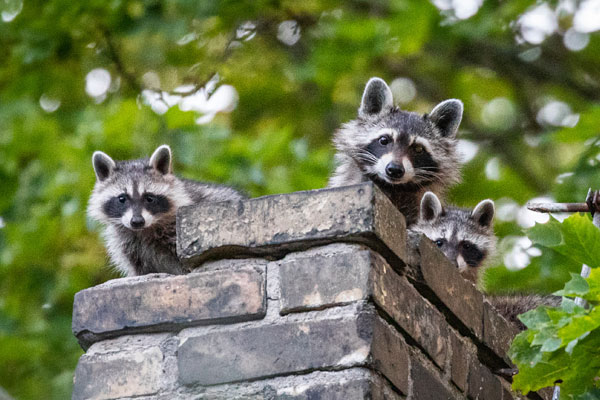How to Keep Critters Out This Winter?
Preparing Your Home for Winter: Keep Rodents and Wildlife Out Winter brings cozy nights by the fire, warm blankets, and hot cocoa—but for pests, it’s a season of survival. As temperatures drop, rodents and wildlife start searching for a warm place to shelter, and your home might be at the top of their list. Without proper preparation, you could be sharing your space with unwelcome critters. Here’s how to prepare your home for winter and keep pests out where they belong. Common Winter Pests When winter sets in, certain critters become much more likely to invade your home. Knowing what to look out for can help you stay ahead of an infestation. Fun Fact: A mouse can fit through a hole the size of a dime, and a rat can chew through even tougher materials like wood and plastic. Why Prevention is Key Ignoring the possibility of pests entering your home can lead to serious problems: By taking proactive steps now, you can avoid these issues altogether. How to Prepare Your Home for Winter Keep rodents and wildlife out by following these practical steps: Pro Tip: Regularly inspect your home throughout the winter to ensure no new entry points have formed. Warning Signs of an Infestation Even with the best preparation, pests can sometimes find their way inside. Here are some early signs to watch for: If you notice any of these signs, it’s time to act fast before the problem gets worse. How Critter Control Can Help While DIY prevention can go a long way, professional pest control ensures your home stays critter-free all winter long. At Critter Control, we specialize in: We understand how stressful pest problems can be, and we’re here to provide fast, effective solutions tailored to your home. Stay One Step Ahead of Winter Pests! Don’t let rodents and wildlife ruin your winter. By preparing your home now, you can enjoy a cozy, pest-free season. However, if critters have already made themselves at home, it’s never too late to take action.Protect your home and family this winter. Contact Critter Control of San Jose today for a free inspection and customized prevention plan. Let us handle the pests so you can focus on what matters most!
DIY Wildlife Removal Dilemma

Is It Worth the Risk? A Comprehensive Guide to DIY Wildlife Removal So, you have critters running around in your attic. You can hear them scratching and clawing at the items that are there. This is a common problem that we see everyday. At this point, you have a choice: call a professional wildlife removal for a free inspection and consultation, or go to the local home improvement store and ask someone to help you. Here’s some really good reasons why it’s best to hire a local professional: Professionals understands wildlife behaviors If you catch and remove an animal, you may have just separated a mother from her babies. The babies will die, which will create a new problem for you with very bad smells. At this point, you will have to pay someone to find, remove, and clean up the mess. Don’t use Poison If you poison the animals, they will die. They will die either inside your walls or in the attic where they will start to rot, or outside where predators like owls or hawks will eat them and also get sick and die. Please do not poison the animals. Use equipment if needed The damage left behind by critters is a biohazard. Improperly handling biohazards can make you, your family, and your pets very sick. We are Wildlife removal experts We know how to determine where wildlife has entered your home in the first place. We will expertly repair the holes and have you looking like new again. We understand DIY projects and in some cases, this can be a good idea when it comes to residential maintenance. However, this is not the case with wildlife removal. We are Affordable Critter Control of San Jose, a family-owned business operating here in San Jose, CA. We have the word affordable in our name because we are. We do not have the significant overhead costs of large national chains; therefore, we can solve your problem at a lower cost. Call us today if you believe there is an animal invader in your home. We will come over to assess and discuss your options with you. Our number is 408-790-1654. We look forward to serving you.
Everything You Need To Know About House Mice

Keeping House Mice Out of Your Home: Effective Prevention and Control Strategies Finding a mouse in your home can be emotionally draining, and for good reason. Despite their small size, house mice can cause significant visible and hidden damage to the home. They can transmit diseases such as hantavirus and often fleas and mites, which can feed on people and pets. House Mouse Identification The house mouse (Mus musculus) is small, thin, light and hairy. An adult’s tail is approximately as long as the total length of the head and body, for a total length of 5¼ to 7¾ inches. Their fur is smooth and their color is dark on their back and light brown or white on their belly, but their tail is semi-naked and uniformly dark. They have small eyes and big ears. House mice are similar in appearance to deer mice, which are bicolored. Deer mice are pale gray-beige to dark reddish-brown on the back and white on the belly with a distinct line where the two colors meet, and their tails are distinctly bicolored. Signs of A House Mouse Infestation Mice can be identified by their appearance, but their presence can be much more obvious. According to the National Pest Management Association, signs of a house mouse infestation include: Where Do House Mice Nest? Mice like to nest in soft, warm places. They build nests and raise their young in wall or attic insulation, in storage boxes or drawers containing paper or clothing, in unused upholstered furniture or bedding, and other similar locations. They collect soft materials such as shredded paper, cloth and cotton to cover their nesting area, which is in this undisturbed area or cavity. Why Are House Mice Dangerous? House mice can be more than just a nuisance. They can spread a number of airborne diseases through their feces, urine and saliva. The most dangerous disease they carry is salmonella, which can contaminate food sources and cause food poisoning. Other diseases they transmit include infectious jaundice/leptospirosis/Weil disease, which is transmitted through urine, bubonic plague, and typhoid fever. Additionally, mice can spread airborne allergens that contribute to respiratory diseases such as asthma. Finally, mice gnaw and chew on various objects because their incisors are constantly growing and must remain worn down. Unfortunately, they often eat away at electrical wires, which can lead to short circuits and sometimes even fires. House Mouse Habits House mice are opportunistic eaters and nibblers. They feed primarily at two times of day, at dusk and just before sunrise, with many mini-feedings in between. House mice leave droppings and urine droplets wherever they stay or travel. They prefer dark, isolated nesting sites that contain plenty of nesting material and can squeeze through an opening as small as 1/4 inch to get where they want to go. Rodent Control and Prevention There are many things you can do around your home every day to prevent or control a house mouse infestation: House Mouse Traps If you want to catch house mice, snap traps are the most effective type you can use. Using small rodent baits such as peanut butter or pieces of fruit, bait the trigger and place it against a wall where it is likely to roam. Other useful traps include self-contained live traps, glue boards and rodenticides. However, continued use of rodenticides is discouraged because they can be dangerous to children and pets. Additionally, a dead mouse can land on an inaccessible floor or wall, which can attract flies and other pests and create foul odors. Pest Control Problems Call Critter Control of San Jose You can certainly try to fix a mouse problem yourself, but many DIY mouse control solutions only work for a short time or don’t fix the entire problem. If you are unable to do this or need help, it is time to call in a pest control professional to conduct a thorough inspection and help you develop a plan to eliminate mice in and around your home. Contact Critter Control of San Jose today for a free estimate!
Keeping Critters Out: Your Guide to Searching Local Critter Control

Say Goodbye to Critters Find a Reliable Critter Control Company in Your Area If you are one of the many people in the California area looking for animal control companies near you, then you have landed on the right website. Critter Control of San Jose is an animal control company serving San Jose, CA and beyond with services such as bat, rodent, squirrel and raccoon removal. Critter Control–Opossum Removal In California, Opossum season begins in January through February, and June through July. So it’s no surprise that residents search Google for terms like “Opossum removal near me.” Although these creatures pose little threat to humans, they continue to be a nuisance to many San Jose residents. Critter Control–Rodent Removal There are many types of rats and mice that can infest your home or property. These animals can cause property damage by chewing building materials. They are also known to transmit diseases such as plague (yes, that plague), hantavirus, salmonellosis, and other sometimes fatal diseases. These are animals that you do not want in or around your home. This is why “San Jose rodent control” is a popular buzzword in the world of creature control. Critter Control–Squirrel Removal Squirrels are collecting nuts for the winter season from yards and trees across California, and San Jose residents are searching for things like “squirrel removal near me.” Like bats, squirrels pose little threat to humans. However, they can destroy or damage property by chewing through materials. No homeowner wants to know that all the brush-tailed squirrels in the yard are causing damage to their home. If squirrels have caused enough damage to your home or yard, call Critter Control of San Jose to humanely remove them from your property. Critter Control–Racoon Removal More than many other creatures in California, raccoons like to go to your dumpster looking for something tasty to eat while also littering your driveway. When homeowners in San Jose, CA wake up and see last week’s trash on the driveway, they’re probably looking for something like “raccoon removal near me.” The Critter Control of San Jose team is well equipped to properly capture and remove pesky raccoons from your home. Critter Control–Skunk Removal Skunks are relatively easy pests to identify. Their unique characteristics, a white stripe on the back of their black fur and an infamous stinky smell, are undeniable. Skunks are nocturnal, so it wouldn’t be unusual to smell their unique scent without seeing one. However, if this smell persists day after day, there may be a skunk in your yard that needs to be eliminated. These animals are the most common carriers of rabies in many parts of the country. In addition, the associated health risks justify the use of the professionals at Critter Control. If you are in the San Jose, California area and are looking for “animal control near me” then call Critter Control of San Jose today!
Understanding Rodent Activity Cycles: When Are They Most Active?

When Does Rodent Activity Stop or Begin to Decrease? Like rats and mice, rodents can be persistent pests that wreak havoc in homes and businesses. Understanding the behavior of these creatures, especially when they are most active and when their activity decreases, is critical to effective rodent control. Today, we will examine the factors that affect rodent activity and develop strategies to control and prevent infestations. Nocturnal Nature Rodents are primarily nocturnal animals, meaning they are most active at night. This behavior is an adaptation to avoid predators and take advantage of the cover of darkness when foraging for food. Nighttime gives them a sense of security to explore their surroundings and find resources. Environmental Factors Rodents’ activity levels can be influenced by environmental factors, and their behavior can vary depending on the climate and season. In colder climates, rodents may become more active in the fall as they seek shelter and food sources before winter. In warmer regions, their activity may remain relatively consistent throughout the year. Reproduction and Nesting Rodents are prolific breeders and their reproductive cycles play an important role in their activity patterns. Rodent populations can increase during the warmer months, resulting in increased mating and nesting activity. Therefore, spring and early summer are often the peak season for rodent activity, but this can vary depending on the species and local conditions. Food Availability The main factor influencing rodent activity is the availability of food. Rodents are opportunistic feeders and their feeding behavior is closely linked to the accessibility of food sources. As winter approaches and natural food supplies dwindle, rodents may become more active indoors and seek shelter and food in human habitats. Signs of Reduced Activity Although rodents are generally active year-round, certain factors may contribute to the perception of a reduction in their activity levels. During extreme weather conditions, such as very cold or very hot temperatures, rodents may be less active as they seek shelter from the harsh conditions. However, this does not necessarily mean that their presence has decreased. Effective Rodent Pest Control Strategies Addressing rodent infestations requires a multifaceted approach that considers their behavior and employs effective pest control strategies: Contact Critter Control San Jose for Rodent Control Throughout Northern California Understanding when rodents are no longer as active requires considering their nightlife, environmental factors, reproductive cycles, and food availability. Although rodent activity can fluctuate throughout the year, effective rodent control requires a proactive and persistent approach. By implementing strategies such as sealing entry points, properly storing food, regular cleaning, and professional pest control services, you can control and prevent rodent infestations, creating a healthier and safer environment for your home or business. Stay vigilant and take decisive action to ensure the well-being of your space. Contact Critter Control San Jose if you have a rodent infestation. Our team will arrive quickly, treat the infestation, and help you restore safety to your property. Schedule a free consultation today!
Underground Garden Pests? Protect Your Lawn

Underground Garden Pests? Protect Your Lawn When it comes to keeping a garden or lawn healthy and green, there’s often more going on beneath the surface than meets the eye. underground pest infestations can cause damage to your outdoor areas that may not be apparent at first glance. We take a look at the world of garden and lawn pests and the different types of creatures such as prairie dogs, moles, voles and ground squirrels that tend to live underground. We’ll identify the signs to look for and, more importantly, find out how Critter Control of San Jose can be your trusted partner in solving these problems in the San Jose, CA area. Common Underground Garden Pests Meet the Culprits underground pests come in many different shapes and sizes and each can harm your garden in different ways. Let’s take a closer look at some of the most common underground garden pests: Identifying Signs Of Underground Garden Pests Reading the Clues Early detection of underground garden pests is crucial to minimizing damage. Look out for the following signs: Effective Methods For Controlling Underground Garden Pests Taking Back Your Garden To regain control of your garden against underground pests, there are several effective methods you should consider. You can opt for trapping and use live traps and repellents to control ground squirrels and moles. Another option is fumigation, which involves eliminating these annoying creatures by targeting their tunnels. Additionally, choosing plants that are less attractive to pests can serve as a natural deterrent. Finally, you can look into nematode management and use beneficial nematodes to control harmful nematode populations in your garden. Types Of Pests That Damage Lawns Underground Lurking Below the Surface Even your lawn is not safe from the threat of underground pests. The most common culprits include grubs, which are beetle larvae that feed on grass roots, resulting in unsightly brown spots and a weakened lawn. Stink bugs, on the other hand, burrow into blades of grass, causing yellowing and eventual death in the affected areas. Nematodes, which commonly attack lawn roots, can cause thinning and unhealthy lawns. Identifying Signs Of Underground Pest Damage On Lawns The Lawn Whisperers Timely action is important when it comes to recognizing signs of underground pest damage on your lawn. Keep an eye out for patchy grass, with irregular patches of discolored or dead grass often signaling grub infestations. If your grass starts wilting or turning yellow, it could be a sign of billbug damage. Additionally, nematode-infested lawns may display thinning, unhealthy turf in certain areas. Techniques For Controlling Underground Lawn Pests Reclaim Your Green Space If you’re struggling with underground lawn pests, consider these effective techniques. Start with biological control, where beneficial nematodes can work wonders in controlling larval and nematode populations. In more severe cases, targeted insecticides may be required for effective treatment. And remember, properly caring for your lawn can go a long way toward preventing future pest infestations. Cost Of Professional Underground Pest Control In San Jose, CA Investing in Your Outdoor Spaces The type of pest, the extent of the infestation, and the size of the affected area can all impact the price of professional underground pest control services. Households in San Jose, California should be prepared to spend a reasonable amount on pest control on their plants and lawns. In the fight against pests in underground gardens and lawns, knowledge and expertise are your greatest allies. It’s important to respond quickly to these issues to protect your outdoor spaces and ensure their vitality. Critter Control of San Jose, with its team of experienced professionals, customized solutions, and commitment to the San Jose, California community, is here to help you every step of the way. Don’t let underground pests mar the beauty of your gardens and lawns. Contact us today to reclaim your outdoor paradise.
San Jose, CA Fall Critter Control

Fall in California is quickly approaching. With cooler temperatures and longer nights, that means many animals across the state are looking for a warm place to settle down and enjoy a free meal provided by the San Jose, CA families. Most of these California animals do not pose an immediate threat to human safety, but they can be both a nuisance and cause property damage. Here’s a list of creatures from San Jose, California that might be getting a little more active in your home this fall: Gray Squirrels The Eastern gray squirrel is one of the most common animals found in the forest, in a park, or even walking down a crowded magnolia avenue. So it’s no wonder that these little animals are a common creature in your garden in the fall. However, in the fall, they may be especially eager to find adequate shelter and food in your yard. In fact, squirrels generally finish weaning their young at the beginning of fall. This means there are more squirrels willing to visit your family in the fall. Mice & Rats Mice and rats breed year-round, so they aren’t just a problem in San Jose in the fall. However, the fact that they are still breeding should make residents particularly wary of these reproducing animals. Mice and rats vary in size but are generally small, allowing them to enter homes through tiny cracks in foundations, walls, siding, etc. They are not picky eaters and are willing to eat anything from week-old guacamole to fruit to chicken eggs. This makes them particularly difficult to hijack. Bats Many common species of California bats mate in the fall months, so they are particularly active in the fall. While there are many myths about bats, many of the more sinister myths, such as that they all suck blood or that they all have rabies, are simply not true. Although residents of San Jose, CA are not afraid of these creatures flying through their yards, they can be extremely useful insect control agents. So before you try to eradicate these animals, ask yourself whether their presence in your home is more beneficial or harmful. Bobcats Bobcats are primarily nocturnal and elusive animals, so you are unlikely to see them. However, if your home is surrounded by the bobcat’s prey, you may welcome a visitor every now and then. These animals are generally harmless to humans but can cause harm to pets such as small dogs or cats. Coyotes Coyotes are increasingly common residents of the California ecosystem. That’s why it’s good that residents of San Jose, CA are aware of the behavior of these animals. During the fall months, smaller coyotes begin to leave the pack, resulting in an increase in the active coyote population. Although coyotes are beautiful animals in their own right, they can cause significant damage to homes and properties. Because they are so content to eat whatever they can find, a coyote may rummage through your trash, eat a chicken from your coop, scare the cat, and steal a melon or two from your fall harvest. If you have encountered these San Jose critters too often or notice an increase in their populations in or around your property, call Critter Control of San Jose today!
Animals & Pests in the Chimney

Your chimney is a great place to let out smoke and a great place to let Santa in. Unfortunately, some creatures in nature like to follow the example of the big one and climb up the chimney. What’s in My Chimney? For some animals, a chimney is indistinguishable from a hollowed-out tree. They climb in but find they can’t get out. Birds and squirrels are more likely to get stuck in the chimney (you’ll hear a lot of loud scratching and flapping), while raccoons are big enough to climb out. However, this just means that there is a greater chance that they will come back and use the place as a place to raise their young (the young can be heard crying out to their mother from time to time). A wild animal in the chimney can be a nuisance or health hazard. Animals can carry diseases and the chimney is the gateway to your home. Even if they can’t enter your home, you still have to deal with the noises and smells they cause. Provided the animal doesn’t get stuck, it will disappear on its own after a few weeks. How Do I Stop Animals From Getting In? If your chimney is open, install a chimney cap. Smoke can still escape, but animals can no longer get in. A good chimney cap can also protect the interior of your chimney from wear and tear caused by the elements. Also keep the smoke damper closed when the fireplace is not in use. When the chimney is open, the damper can at least prevent an animal from entering your home. Something’s In My Chimney. How Do I Get It Out? Never attempt to smoke an animal out of your chimney. Not only is this inhumane as it can burn or kill the animal, but it also requires opening the damper, which can allow a panicked animal to gain access to the chimney and therefore your home. If a squirrel has become trapped over the shock absorber, you can give it a chance to get out on its own by lowering a rope thick enough (at least ¾ inch) and long enough to reach the shock absorber. You can use a chimney containing peanut butter baited live trap must be removed. If you hear fluttering in your chimney, you’re probably dealing with a stuck bird. Make sure the chimney is closed, then open the damper to allow the fire to fall into the chimney. Once you have opened the fireplace doors, cover the bird with a cloth. You may also want to have friends or family members behind you with a sheet as a safety net to catch the bird if it flies away too quickly. Once you have caught the bird, take it outside and release it. Raccoons are more difficult as they are probably there voluntarily and are raising their young. You don’t need help to get out; You just need a reason to go. Loud noises (e.g. blaring music) and strong smells (e.g. ammonia) can be the cause. For best results, install them just before dark so the raccoons can use the night to come out. However, your departure may take a few days. FAQs that talks about “Animals & Pests in the Chimney” Q: What animals and pests can get into my chimney? A: A variety of animals and pests can get into your chimney, including: Q: How do animals and pests get into my chimney? A: Animals and pests can get into your chimney through a variety of ways, including: Q: What are the signs that I have animals or pests in my chimney? A: Some of the signs that you have animals or pests in your chimney include: Q: What should I do if I think I have animals or pests in my chimney? A: If you think you have animals or pests in your chimney, you should call a professional chimney sweep or wildlife removal company. They will be able to remove the animals or pests safely and prevent them from coming back. Q: How can I prevent animals and pests from getting into my chimney? A: There are a number of things you can do to prevent animals and pests from getting into your chimney, including: By following these tips, you can help to prevent animals and pests from getting into your chimney and causing damage. Here are some additional tips for preventing animals and pests from getting into your chimney: By taking these steps, you can help to keep your chimney free of animals and pests and protect your home from damage. Call Critter Control of San Jose! Removing an animal can be risky. You could accidentally let the animal into your home or expose yourself to a disease it carries. The safest way to get an animal out of the chimney is to entrust it to professionals. If you have questions or need to remove animals, our wildlife control experts can help. Call Critter Control of San Jose at 408-915-2172. We serve the Sunnyvale, Santa Clara, Milpitas, Campbell and Cupertino areas.
Animals in Your Crawl Space in San Jose

In November, a raccoon that tested positive for rabies reminded us that these cute creatures with fluffy tails can sometimes be dangerous. Although raccoons, opossums, opossums, snakes, and rodents such as mice and rats are common in the wild, some may explore or attempt to live in the crawl spaces of homes. Those whooshing noises coming from under the floor of your home could very well be coming from a rodent or a small mammal. To prevent animals from using your crawl space as a den, it’s important to take some preventative maintenance measures. If you suspect small mammals are in your crawlspace, there are several ways to get rid of them. Install bright lights near or near the area. You can also make loud noises by, for example, placing a battery-operated radio in your crawl space. Finally, you can try to get rid of them with pungent odors by, for example, placing a bowl of apple cider vinegar in your crawl space. Overwhelming an animal’s senses is a safe and humane way to drive away your unwanted guests. The last thing you want to do is try to capture an animal like a snake or possum or try to eliminate it yourself. They don’t know if they are rabid and don’t want to risk being scratched or bitten. It’s best to call a professional to remove the animals. Critter Control of San Jose has many techniques for getting rid of animals in crawl spaces. Call the wildlife experts, Critter Control at 408-915-2172 in San Jose, Sunnyvale, Santa Clara, Milpitas, Campbell and the Cupertino area.



